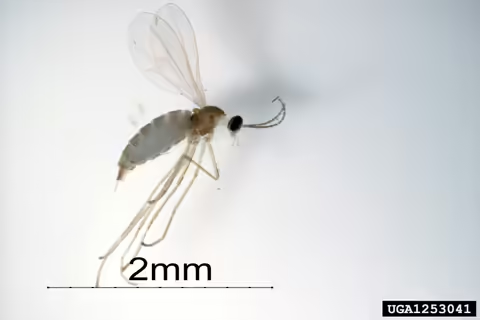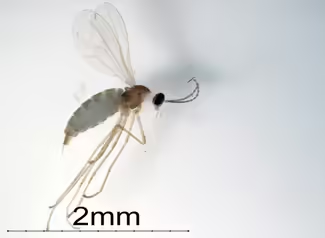Swede midge (Contarinia nasturtii) is a pest of brassicas plants, such as broccoli, Brussels sprouts, cauliflower, collard greens, etc. Its exact spread and distribution in the U.S. is not known, but it has been found in Illinois. Swede midge is difficult to identify and the damage it does is often mistaken for other pests, mechanical damage, or nutritional issues. It does not spread any plant diseases, so its impact is due to direct feeding by the larvae. Adults are weak fliers, so they are likely spread by the movement of plants as opposed to the movement of the insect itself.
History
Swede midge is an invasive pest of brassicas introduced to North America in 2000, where it was detected in Canada. Since then, it has been detected in the U.S., first in New York in 2004. In the north central region of the U.S., Swede midge has been detected in Michigan, Ohio, Minnesota, Wisconsin, and was confirmed in Illinois in 2017 in Cook County.
Regulation
There are currently no regulations in place for the Swede midge.
Adults are very small, around 2 millimeters long. They are light brown to light orange. The larvae are 1 to 4 millimeters long and creamy white to yellow as they grow. They overwinter in the soil as pupa and emerge in spring as an adult. They lay up to 100 eggs and their larvae feed on the growing points of young plants. The larvae take 7 to 21 days to complete development and have up to five generations per year.
Pheromone lures for Swede midge can be used in traps to monitor for the adults. Even with the traps, an expert will need to confirm the identity of the flies in the trap. The main management technique for this pest is crop rotation. Swede midges are brassica specialists that pupate in the soil so planting a non-brassica will disrupt the cycle.
- New York Invasive Species: Swede midge
- University of Minnesota Extension: Swede midge



